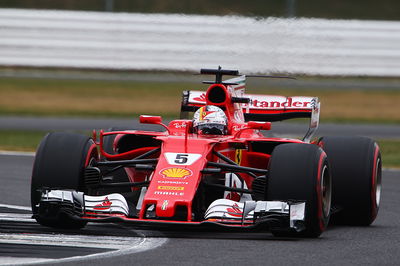Honda issues compounded by McLaren car changes
Honda F1 project leader Yusuke Hasegawa has explained while the Japanese manufacturer's 2017 power unit concept initially under-delivered, problems integrating it into the McLaren MCL32 during winter testing sparked new issues which it could not foresee.
After Honda promised a new power unit concept and design for 2017 after its disastrous previous two campaigns on its return to F1 with McLaren, its fortunes have failed to improve this season hampered by an unreliable and underperforming engine which sees the team at the bottom of the F1 world constructors' championship on just two points at the midway stage.
With Honda eagerly developing its 2017 engine concept it has already introduced its 'Spec 3' version but is still playing catch-up to its manufacturer rivals since its hellish start to the campaign - which Hasegawa believes faults fall on both sides of the McLaren-Honda partnership.
"We conducted some mono-cylinder tests and some experimental tests on other engines, however, when we fired up the complete engine for the first time, we could see it wasn't delivering the durability or performance in accordance with our expectations," Hasegawa said. "We also found many minor issues. So, we needed to modify tiny bits."
"After resolving these smaller elements, we started to test the full concept at the start of this year - call it Spec Zero as it was the initial one - and before the first winter test we confirmed that it ran on the dyno. At that moment we knew that the power was not delivering to our target.
"Then, at the Barcelona test, we found more issues on the car, such as the oil tank issue. It was a car-related issue. This is not a complete engine issue, but of course it is very important."
While factory efforts are able to test power unit updates alongside car changes, customer teams are given factory support to ensure engine parameters and specifications are confirmed to allow teams to develop around these limits.
Due to McLaren-Honda's relatively unique partnership in F1, it appears the transition between Honda's engine developments and McLaren's car developments hasn't been as smooth while a key problem with Honda's oil tank only became clear on the opening day of pre-season testing in Spain when it couldn't withstand the bigger G forces the 2017 F1 cars have produced.
"Many items we could not test on the dyno, so it is normal that we need to check some functions in the car," he explained. "The oil tank is one of the biggest items, so we have a rig for the oil tank but we cannot recreate the same types of G forces and conditions as in the car. By design we have to consider the actual car situation in theory, but sometimes it is not always the same situation so that is why we had some issues with the oil tank.
"The second issue was down to the vibrations. On the dyno, the model is stiffer and heavier, so it doesn't create any synchronised vibrations, but on the car - with the gearbox and the tyres - there is a much lower level of inertia.
"Low inertia does not always create vibrations but it's completely different from the dyno and that's why we suffered a huge vibration on the car. We were aware some level of vibration would come in the car but it was much bigger than we expected."
During the British Grand Prix, McLaren executive director Zak Brown hinted it would be denied F1 engine options from Mercedes or Ferrari for 2018 but its future with Honda also remains uncertain after a frustrating three seasons.
Honda had announced a new deal to supply engines to Sauber from 2018 onwards but that contract has also been thrown into doubt, with sources close to the Japanese manufacturer rating the situation as '50/50' for next year.











